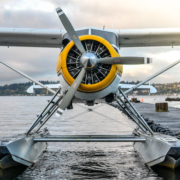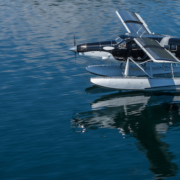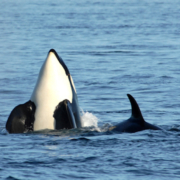Top Picks to Visit During Free National Park Admission Days

Washington gets a bad wrap for its rainy and gray climate. The labels awarded our Evergreen State are not without justification. Take the Olympic Peninsula for example. It receives more rainfall than any other place in the continental US.
However, those who quickly assume rain and gray mean dreary and dull are missing out. Our fair state has some of the best scenery in the world. It is home to lush rain forests, epic mountains, quaint meadows, remote lakes, and a plethora of waterfalls.
We may be a tad biased, but we happen to think the Pacific Northwest is one of the most beautiful places on earth. With this opinion in mind, we couldn’t be more excited about the quickly approaching Free Admission Days.
January 17 and 18 will mark the second time this year Washington State Parks will not require a Discover Pass when visiting state parks.
In celebration of this fantastic event, we’re sharing our three favorite state parks. If you’ve been to them, go again! If you haven’t, we hope this will inspire you to check them out.
Discovery Park
Known to some as “Seattle’s gem,” Discovery Park is our city’s largest green space. The 534-acre site was formerly an Army post. At its westernmost point, the West Point Light Station (also known as the Discovery Park Lighthouse) is still an active navigation beacon. It’s also a prime spot for seeing Mount Rainier on a clear day.
Despite the park’s close proximity to an ever-growing metropolis more than 205 species of birds and large mammals call the park home. Coyotes, black bears, and cougars have even been spotted within its borders. Along its coast, seals and sea lions are frequent visitors. Additionally, its shores include more than two miles of tide pools.
The park features nearly 12 miles of walking trails, the highlight of which is the Discovery Park Loop Trail. A 2.8-mile path, it primarily follows the park’s coast, offering stunning views.
San Juan Islands National Monument
In 2013, the world learned that the San Juan Islands have some of the most diverse, untouched, and stunning habitats. To the folks here at Kenmore Air, this wasn’t new news. We’ve been flying to the San Juans since 1946. But, we’re incredibly pleased this slice of paradise was recognized as a national monument.
There are over 400 islands in the San Juans. They vary greatly in size and terrain. Some are little more than barren rocks while others are blanketed with lush rainforests. Throughout the islands you’ll find a diverse population of wildlife ranging from black-tailed deer and mink to river otters and thousands of birds. Along the shores, you’ll see sea lions and seals. However, orcas are the star.
The majority of the orcas seen in the San Juans are known as resident orcas (aka Southern Resident Killer Whales). Comprised of three different pods (J, K, and L), you’ll primarily see these orcas from mid-April to early October. However, transient orcas have been spotted year round.
A variety of whale watching services, like San Juan Safaris, are offered throughout the islands. Or you can visit Lime Kiln Point state park, one of the world’s best land-based whale watching perches. Alternatively, you could head to Cattle Point Lighthouse. Located on the southeastern tip of San Juan Island, it overlooks the Strait of Juan de Fuca.
Olympic National Park
It’s not just the tide pools and mossy rain forests that make Olympic National Park unique. There’s also the massive, glacier-capped mountains; numerous rivers; and extensive wildlife.
Located on the Olympic Peninsula, this national park receives so much rain it makes Seattle seem like California. In the nearly 8,000-foot-high Olympic Mountains, much of this participation is seen as snow. It feeds more than 250 glaciers. (That’s second only to Alaska!)
At lower altitudes, this heavy rainfall results in a dense rain forest thick with moss and towering old growth forests. Favorite hikes include the Bogachiel river, which runs through La Push into the Pacific; the Hall of Mosses trail, where massive trees support a garden of mosses and lichens; and Marymere Falls, a 200-foot waterfall with a fern-laden base.













